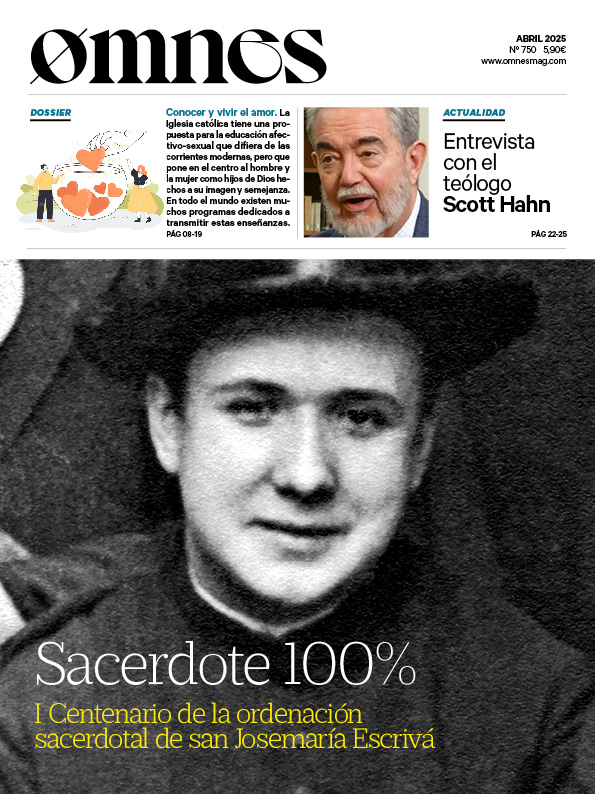In today's digital age, pornography is more accessible than ever. It is presented as harmless entertainment, a form of self-expression or even an educational tool. However, beneath this appearance lies a deeper reality: pornography is not just adult entertainment, but an industry based on the exploitation, degradation and commodification of human intimacy. It alters perceptions of relationships, distorts expectations and fuels social detachment from authentic human connection.
Impact of pornography
Pornography fosters a culture in which individuals become objects of gratification rather than worthy individuals with inherent value. A young woman I met a few years ago, whose name I will not mention for reasons of privacy, shared with me her experience with a addicted partner to pornography. "I always felt like I was competing with an unattainable ideal," she says. "It made me question my worth."
The effects of pornography go beyond mere entertainment; they disrupt real-life relationships by creating unrealistic expectations and eroding trust. It reinforces canons of beauty unattainable and unrealistic sexual behaviors, leading many to feel inadequate in their relationships. Coupled with media-driven representations of perfection, it cultivates dissatisfaction and self-doubt, causing people to compare themselves to artificial standards rather than embrace real human connections. This influences social interactions, shaping expectations of appearance and behavior in ways that can damage trust, relationships and even mental health.
In addition, research suggests that excessive pornography consumption alters brain function. As is the case with substances addictiveThe drug triggers the release of dopamine, creating a dependency that translates into a need for more extreme content. This desensitization affects the ability to establish genuine emotional connections, leaving users feeling empty despite temporary gratification.
Overconsumption creates unrealistic expectations of intimacy, making authentic relationships seem unsatisfying by comparison. This creates a cycle in which personal relationships become strained, trust is eroded and authentic connection is replaced by digital gratification.
On a social level, pornography fosters a culture of self-indulgence and instant gratification, often at the expense of the well-being of others. Instead of valuing mutual love, respect and emotional intimacy, many users are drawn into a pattern of consumption that prioritizes personal satisfaction over meaningful bonds.
A silent epidemic among young people
More and more teenagers are getting into pornography before they fully understand human intimacy. Take, for example, the case of a high school student who, through a simple Internet search, stumbles upon explicit content. Lacking the emotional maturity to process what they see, they absorb unrealistic depictions of relationships in which domination, aggression and objectification are normalized. Over time, this shapes their expectations, leading to problems in their own interpersonal relationships.
Schools and parents may struggle to address the problem. While education focuses on responsible Internet use, many overlook the need to discuss the psychological and emotional impact of pornography. Without guidance, young minds adopt skewed perceptions of relationships, often believing that what they see on the screen represents reality. For example, adolescents who consume large volumes of explicit content may begin to view relationships through a transactional lens, expecting instant gratification without emotional connection. This distancing can make it difficult for them to establish healthy, meaningful relationships in the future.
In addition, the accessibility of pornography through smartphones and social networks means that even those who do not actively seek it out may be exposed to it through advertisements, pop-ups, or links shared by peers. Parents who assume their children are immune to this type of exposure often underestimate the pervasiveness of explicit content on the Internet. Without parental guidance, young people may turn to peers or unreliable sources of information, further exacerbating the problem.
One concrete step to address this crisis is to encourage open dialogue in families and schools. Parents who establish clear, age-appropriate conversations about privacy and respect help children develop a healthy understanding of relationships before they encounter harmful content.
Schools can integrate media literacy programs that teach students to distinguish between real-life relationships and the distorted representations seen in pornography. When teens gain knowledge, they are better prepared to navigate digital spaces responsibly and critically evaluate the media they consume.
The ethical cost: behind the scenes of the industry
The pornography industry is not limited to the production of consensual adult content, but is a multi-billion dollar enterprise with a dark undercurrent. Reports of coercion, trafficking and exploitation within the industry emerge frequently. Many people enter the industry in financial distress, while others are manipulated into performing on terms they never agreed to. In some cases, artists suffer long-term trauma and struggle with psychological repercussions long after leaving the industry.
Behind the scenes, some people, especially vulnerable young women, are lured with false promises of economic security and career opportunities, only to find themselves trapped in exploitative contracts. Others are forced to participate through threats or blackmail. Beyond direct exploitation, the industry has been linked to the dissemination of non-consensual content, such as revenge porn and leaked materials. The rapid dissemination of explicit material through digital platforms has made it almost impossible for some victims to reclaim their dignity and privacy once their images are circulated without consent.
Breaking the Cycle: A Call to Awareness
While society increasingly recognizes the harms of pornography, real solutions require proactive engagement. Education plays a crucial role: teaching young people dignity, respect and authentic love. Open conversations in families, schools and faith communities can help people understand that true intimacy is based on trust, not objectification.
In addition, digital accountability tools, such as Internet filters and screen time management, offer practical ways to limit exposure. Support groups and counseling provide a path to recovery for those struggling with addiction, offering hope that change is possible.
At bottom, the fight against pornography is a fight for human dignity. A society that respects people does not condone their commodification. Just as we reject exploitation in other forms - human trafficking, child labor or abuse - we must also challenge an industry that profits by reducing people to objects of desire.
Change is possible, but awareness must come first. Counseling, support groups and family support are valid ways to overcome pornography addiction. It is possible to regain self-esteem, repair relationships and rediscover the beauty of authentic human connection, but to do so, awareness of pornography and its problems must be raised.
The impact of pornography is far-reaching, affecting minds, relationships and even social structures. The challenge before us is not only to resist temptation, but to foster a culture that values authentic love, respects human dignity and promotes relationships based on mutual care and respect. By addressing this issue head-on, we take a crucial step toward restoring the sacredness of intimacy and human connection.
Founder of "Catholicism Coffee".









